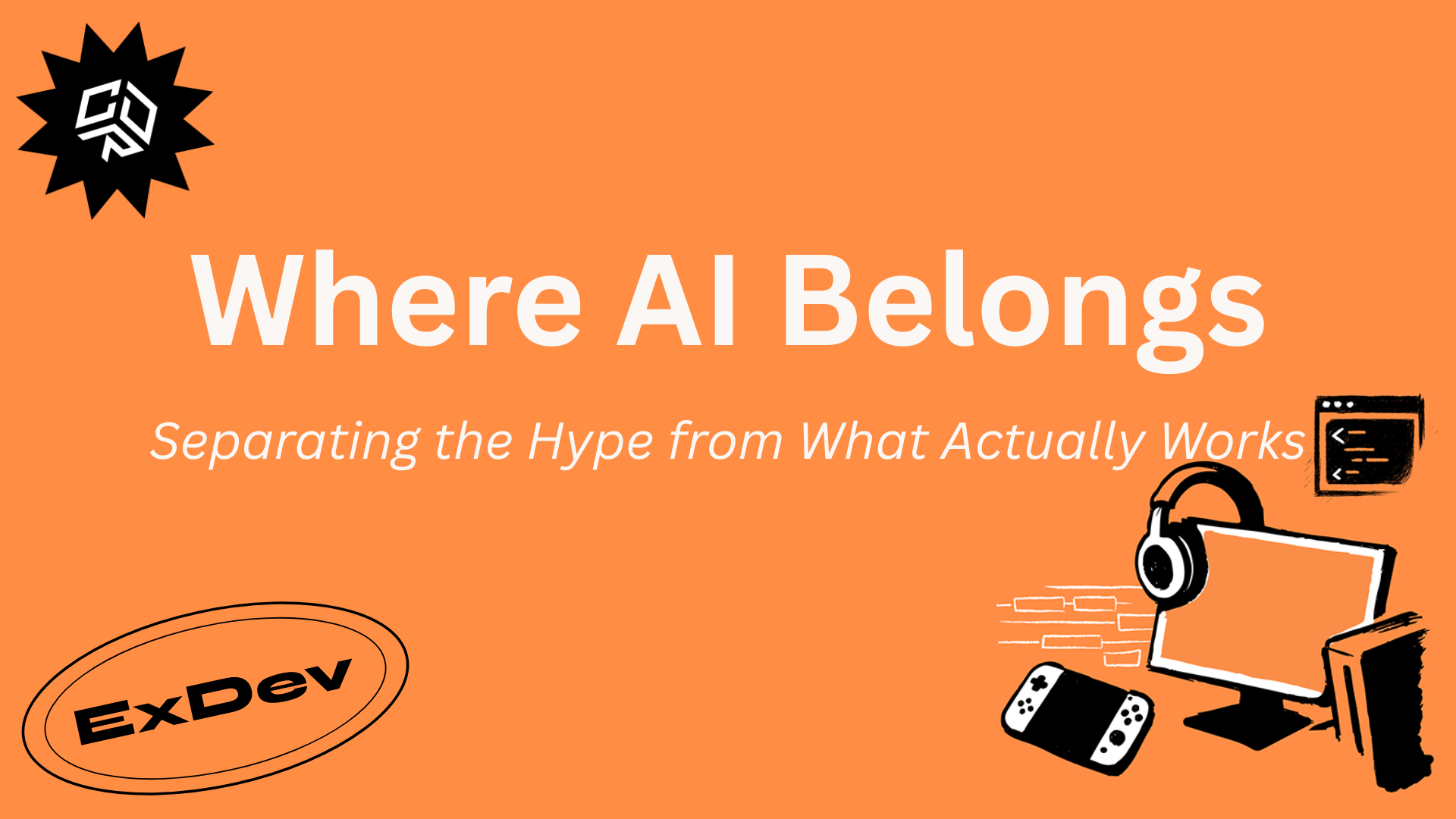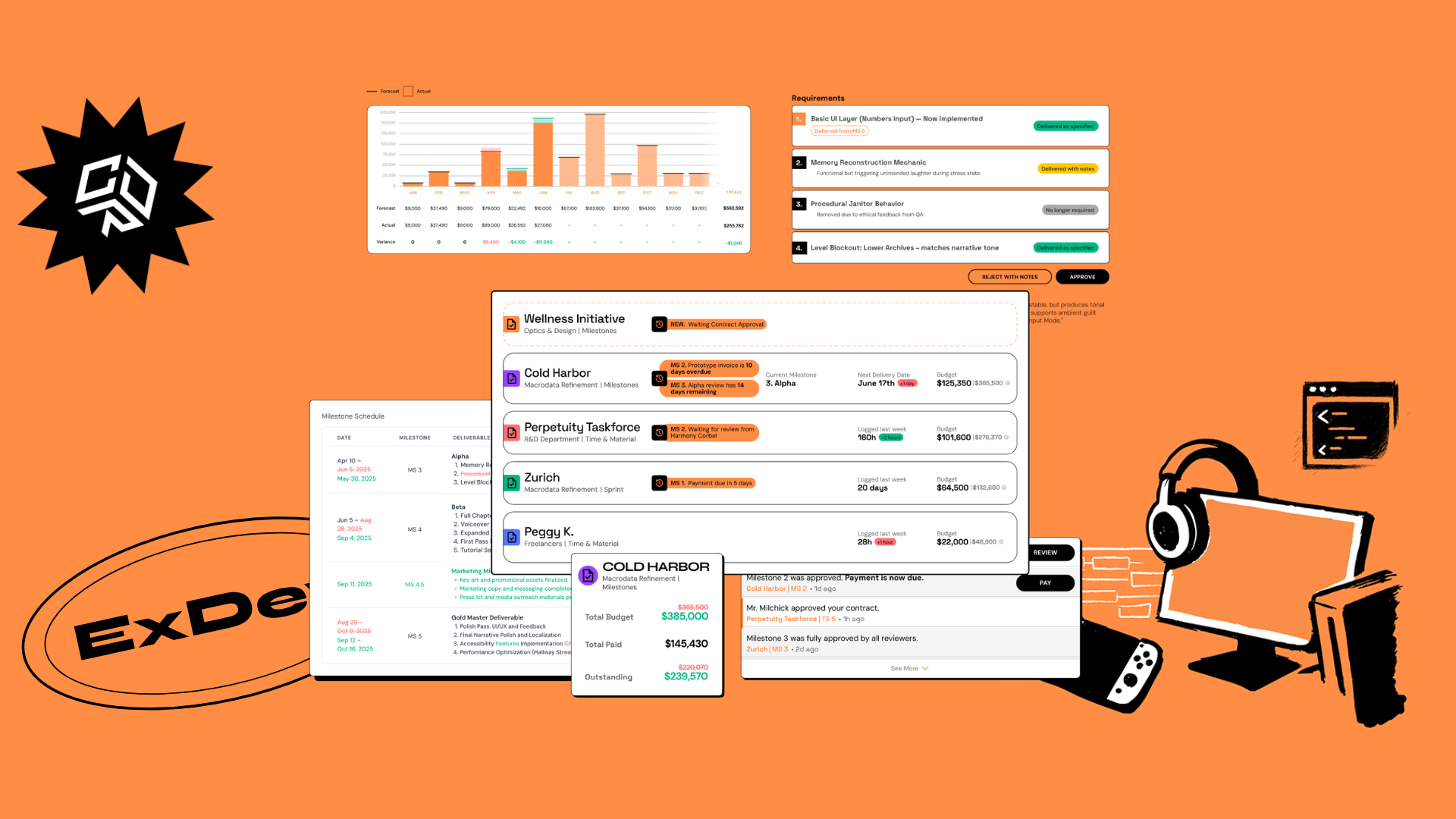ExDev mistake 1: not adjusting your service strategy for each production phase
Requirements change throughout your game’s production cycle. So, why are you sticking to the same service strategy?
If you want to avoid unnecessary overhead while maximizing the value you receive from your service spend, you should tailor your service strategy to account for the differences in production. This means adjusting the types of providers you hire, the amount you budget per role, and the way you structure your contracts.
Before we dive in, let’s align on a simplified set of production phases (there are many ways to slice this pie, so please roll with my definitions for now):
1) Pre Production
2) Prototyping
3) Production
4) Wrap Up
5) Live Ops
Pre-Production - when you have a first-pass GDD and a very small team, and you're defining the concept-level look and feel of what you’re going to build.
Prototyping - testing concepts from pre-production in order to define the specs required to develop a feature or request an asset. Approved prototypes allow you to enter production.
Production - where the bulk of the work, both internal and external, is done. Because you’ve done all your prototyping work, you can pour on as many resources as you have available.
Wrap Up - where the final polish happens, usually performed by a smaller core team.
Live Ops - ongoing work done in service of an active player base.
Each of these production phases requires a different mix of talent, and if you decide to staff externally, a different service approach.
There’s a lot to unpack here, but let’s start with one general rule of thumb: the earlier you are in production, the more senior the resource you should hire, and the more you should budget per role for service talent.
This is because the complexity of tasks in early phases - figuring out the specs of a prototype and defining how they fit into your game - are far greater than pipeline work in production.
As you enter production, costs should go down. At this point, you should be able to describe your tasks very thoroughly, which makes it easier to get lots of bids for that work. The resources you bring on can also be less experienced because everything is spelled out for them.
These differences in approach also affect how you structure your vendor engagements and the type of contract you should use. More on that tomorrow…





